What kind of furniture would Jesus pick? Well, he’d likely choose simple, functional pieces, like tables and benches made from wood and reeds. These reflect community and connection, don’t they? You’d see multi-functional items, like ottomans with hidden storage and nesting tables for efficiency. He’d want to create a warm atmosphere for shared meals and conversations. Sounds cozy, right? If you’re curious about more ancient styles and modern parallels, then keep exploring!
Key Takeaways
- Jesus would choose simple and multi-functional furniture to reflect a minimalist lifestyle focused on relationships and spiritual wealth.
- Tables made from natural materials symbolize community and God’s provision, aligning with Jesus’ values of sharing and hospitality.
- Lighting elements like lampstands enhance spiritual nourishment, representing divine guidance and creating a sacred atmosphere.
- Furniture arrangements would prioritize warmth and openness, fostering inviting spaces for communal gatherings and meaningful conversations.
- Practical storage solutions would promote a clutter-free environment, allowing for deeper connections and freedom from material burdens.
The Significance of Simplicity in Jesus’ Choice
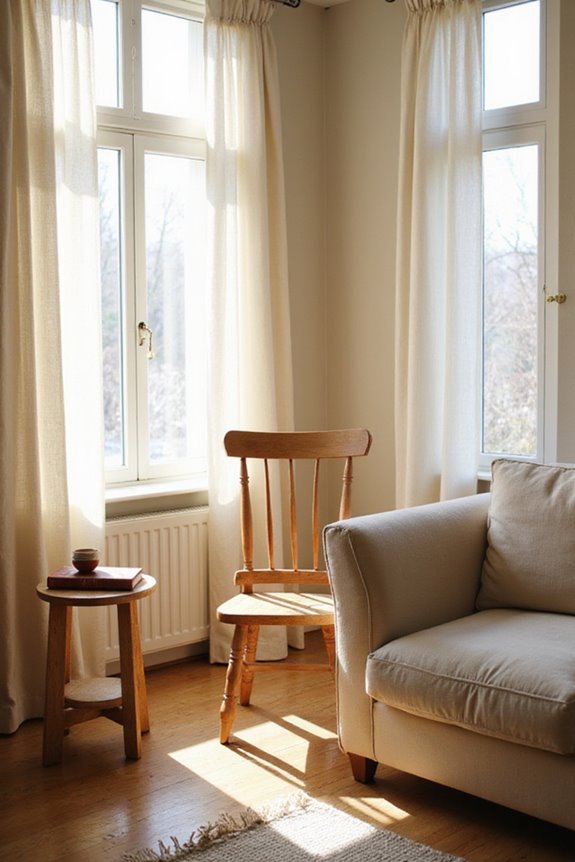
When you think about Jesus and his choices, have you ever wondered why simplicity was such a big deal for him? The simplicity significance in Jesus’ lifestyle isn’t just about having fewer possessions; it’s a reflection of what truly matters. He didn’t have a home or treasure chests filled with stuff. Instead, he traveled lightly, focusing on relationships and spiritual wealth.
Why would that matter to you? Well, living without excess can bring clarity and peace. Imagine what it would be like to prioritize what really counts, just as Jesus taught! It’s about freeing yourself from material burdens. So, wouldn’t adopting some of that simplicity today lead to deeper connections and fulfillment in your life? You bet it would! Additionally, embracing modern storage solutions can help you maintain a clutter-free environment, aligning with the minimalist lifestyle Jesus exemplified.
Materials of the Time: Wood, Reeds, and Clay
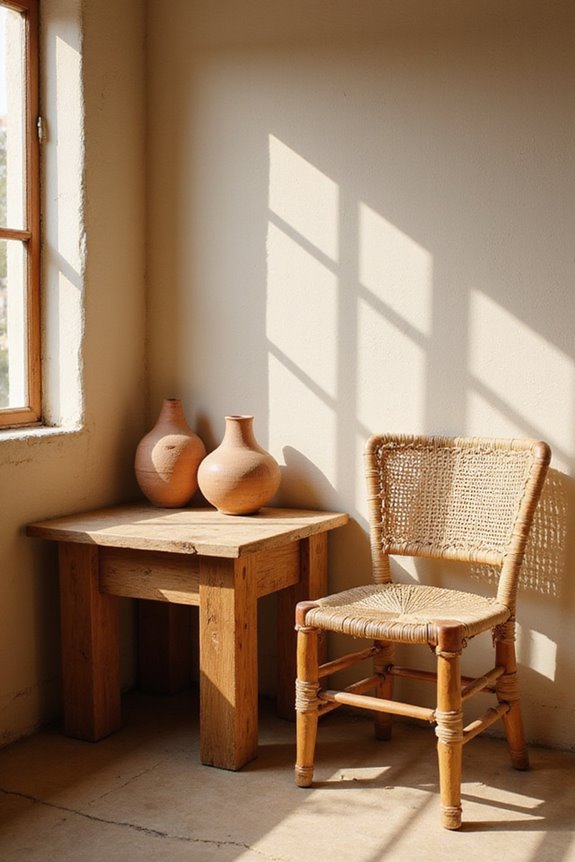
Picture yourself in a bustling ancient marketplace, surrounded by a variety of unique furniture items crafted from local resources. Can you imagine the sight of sturdy wood pieces, made from sycamore or date palm? Despite their scarcity, these woods were cherished for furniture that lasted!
Now, have you noticed the baskets and mats made from reeds? Their uses were versatile, providing both storage and comfort. Clay, on the other hand, was all about durability. Think about those solid storage vessels you’d find—perfect for keeping your essentials safe. These materials not only shaped furniture but also reflected the daily lives of people back then. It’s fascinating to contemplate how creativity blossomed with what was available! Don’t you just love that? Additionally, the durability of natural fibers in modern rugs mirrors the craftsmanship of ancient furniture, emphasizing the timeless value of quality materials.
Multi-Functional Furniture for Daily Life
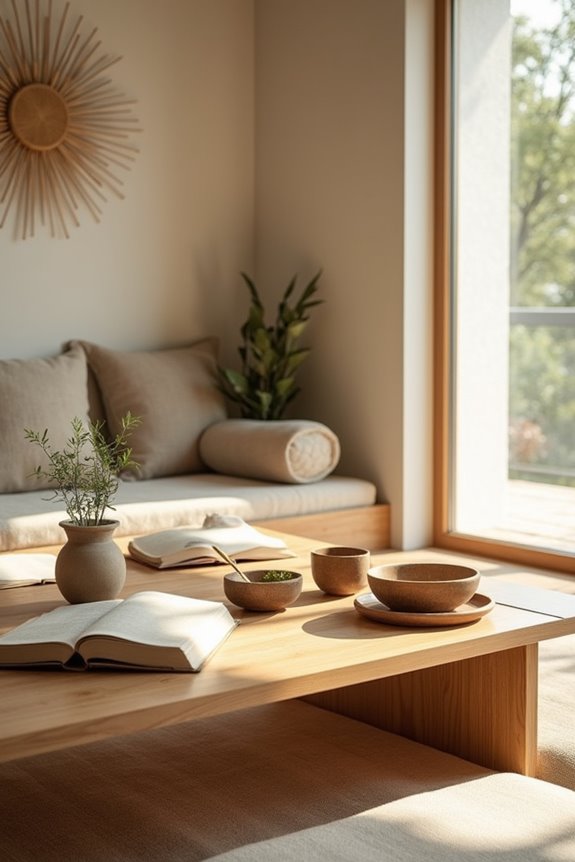
Imagine walking into a cozy, stylish room, and every piece of furniture seems to pull double duty! Multi-functional furniture is all about space efficiency and versatile designs, making your living area both functional and fabulous. Have you ever seen a Murphy bed that folds up against the wall? It’s a lifesaver in small spaces!
Consider nesting tables that tuck away when not in use. How cool is that? You can even find ottomans with hidden storage—perfect for stashing your snacks or books. And don’t forget about sleeper sofas; they transform any room for guests in a snap! With these innovative pieces, you’ll reduce clutter while increasing functionality. Modular designs like sectional sofas can also provide additional seating options without taking up too much space. What’s not to love?
Symbolism of Furnishings: The Table and the Lamp
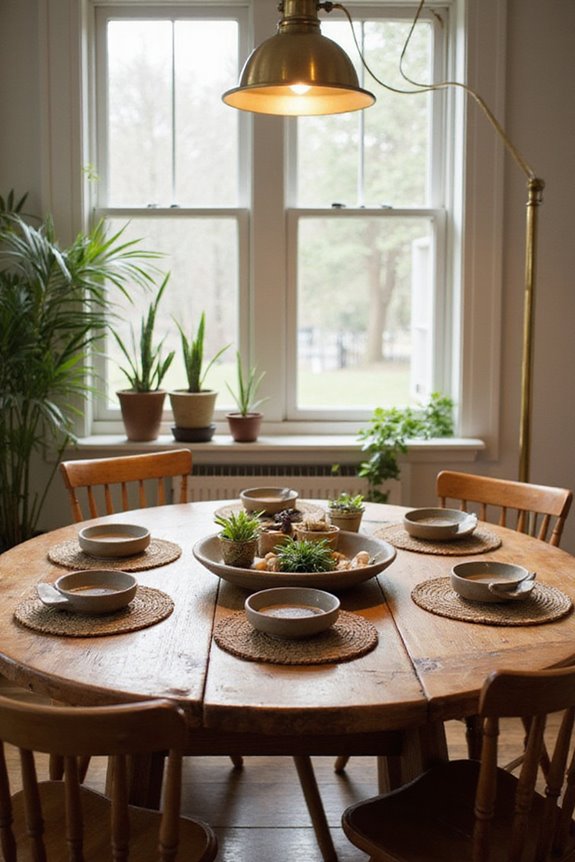
Have you ever thought about how the right furnishings can tell a deeper story? The table, for instance, carries rich table symbolism. It’s not just a place to eat; it represents community and God’s provision, inviting everyone to gather around. Isn’t it amazing how bread on the table symbolizes spiritual sustenance?
Now, let’s shine a light on the lampstand significance! This piece doesn’t just illuminate; it symbolizes divine guidance and God’s everlasting presence. The lampstand’s light guarantees the table’s bread is seen, reminding us of how spiritual nourishment is enhanced by God’s brilliance. Together, these furnishings create a sacred atmosphere. So, wouldn’t you agree that selecting furniture with such meaning can truly elevate your space?
The Role of Furniture in Hospitality and Community
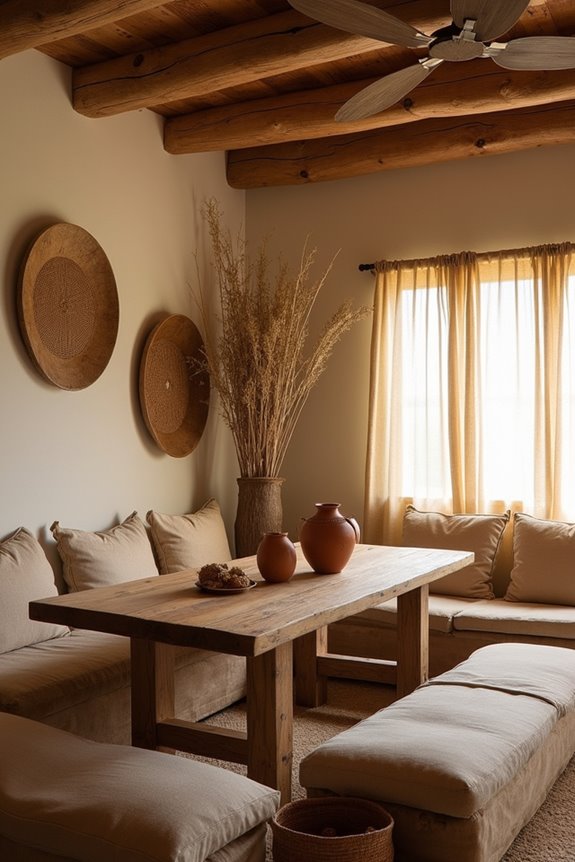
When you think about hosting friends or family, doesn’t the furniture in your space play a huge role in creating a warm atmosphere? Picture a communal table, set for shared meals—it’s not just a piece of wood; it’s where memories are made! You see, furniture arrangements can encourage face-to-face conversations and bonding moments. Isn’t that what hospitality traditions are all about?
Consider benches or flexible seating that invite everyone to gather around. It turns any space into a welcoming hub for communal gatherings. Plus, how fun is it to transform your living area for different occasions? With thoughtful furniture choices, you’re not just offering a seat; you’re creating experiences! Isn’t that the kind of vibe you want in your home?
Economic Status Reflected in Furniture Design
While it might seem like just pieces of wood and fabric, furniture can actually tell you a lot about economic status. Ever noticed how that fancy mahogany table screams luxury? It’s all about wealth signaling! Higher-quality materials like walnut or intricate craftsmanship often suggest a more affluent lifestyle. But what if you’re on a budget? Thanks to mass production, stylish pieces are becoming more economically accessible. And let’s not forget the cultural representation! Chairs crafted with symmetry can symbolize middle-class taste. So, whether you’re eyeing that elegant set or opting for simpler, stenciled designs, furniture speaks volumes about where you fit in economically! Isn’t it fascinating how what you sit on can reveal so much?
Continuity of Design: Ancient Roots and Modern Parallels
Furniture isn’t just about function; it’s steeped in history! You might be surprised to learn that ancient craftsmanship laid the foundation for what we see today. For instance, Greek furniture embraced ergonomic principles, ensuring comfort while maintaining balance and style. Isn’t that cool?
Look at Egyptian designs; those elegant pieces often featured rich woods and animal motifs that still inspire modern creations. You’ll notice similar luxurious materials being used today, just like the Romans did.
As you admire your own furniture, think about its legacy! Are those clean lines and functional shapes really new? No way—they echo ancient designs that perfectly blend beauty and utility. So, why not appreciate this timeless connection in your own home?
Frequently Asked Questions
What Unique Furniture Designs Existed in Jesus’ Time?
In Jesus’ time, unique furniture designs showcased ancient craftsmanship, blending beauty with functional aesthetics. Stools and simple tables were common, while intricate stone and wood pieces reflected both daily life and cultural significance.
How Did Furniture Reflect Cultural Influences on Jesus’ Community?
Furniture in Jesus’ community reflected cultural symbolism and social hierarchy. The design and materials conveyed status, with wealthier individuals owning more elaborate pieces, while simpler items illustrated utilitarian needs within homes and gathering spaces.
Were There Specific Furniture Items Used in Religious Ceremonies?
Yes, there were specific items used in religious ceremonies. You’d find altar tables for offerings, while ceremonial chairs provided seats for leaders, each piece symbolizing importance and enhancing the sacred atmosphere during rituals.
Did Jesus Influence Furniture Design With His Teachings?
Like a master artisan shaping wood, Jesus’ teachings carved a path for furniture design. His emphasis on spiritual symbolism and minimalist aesthetics inspires creations that encourage community, purpose, and a sense of divine connection in our lives.
How Did Furniture Choices Differ Between Urban and Rural Areas?
Furniture choices differ markedly; urban settings favored ornate designs reflecting wealth, while rural areas emphasized practicality and local materials. You’d appreciate the blend of urban simplicity with the uniqueness of rural craftsmanship in each piece.




